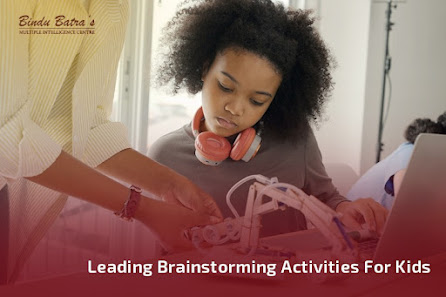In-Classroom Multiple Intelligence Activities For Kids
Evolution has been significantly evident in education circles. Don’t you agree? Think about it — student demographics, teaching techniques, the introduction of new media, and more; the once-known aspects of education are either outdated or fail to hit the mark in present times. Are you certain that your child is adept at keeping up with the constantly changing educational landscape? The new models of education are not confined to texts and theories. Instead, soft skills, a creative eye, a confident personality, and an independent nature are must-have abilities for scholars today. Unfortunately, traditional schools fail to personalise education for young scholars. Introduce your little one to the perks of early learning and multiple intelligence activities for a bright and successful career.

What are multiple intelligence activities all about?
Are you less familiar with the concepts of multiple intelligence? Simply put, multiple intelligence refers to the different and unique teaching techniques by which students learn and gather information. The theory, first outlined by Howard Gardner in 1983, effectively highlights the importance of brain-training scholars with different abilities and intelligence for a holistic learning experience. Sadly, the notion of intelligence is often ranked by the grades and scores acquired by students. Do you think it is the right way of evaluating a child’s learning abilities? Of course not!
According to Gardner’s theory, every scholar is blessed with intelligence of all kinds in varying degrees. Someone with the proficiency of discerning various subjects and melodies right might not be great at communicating their feelings. Does it imply that one student is a little less skilled than the other? Absolutely not! While it is critical to refine skills and abilities in kids, it is equally crucial to work on a child’s weaknesses. Prominent multiple intelligent centres in the country, like Bindu Batra’s Sparkle Minds, run using the core principles of multiple intelligence. The institution welcomes students in a holistic and supportive learning environment to grow, educate, nurture, and strengthen confidence in young minds.
Classroom activities that encourage multiple intelligences in kids
Exposing young scholars to early learning is always a good idea. It familiarises little ones with real-world scenarios and helps them transition smoothly into main schools for further education. Unlike traditional schools, education modules in early learning centres integrate brain development games for kids, storytime, and plenty of other group activities with daily lessons to nurture curious young minds.
Do you know why games like puzzles, monopoly, chess, Rubik’s cube and building blocks are the best-suggested brain development games for kids? Little do you realise that these games are no ordinary hours of fun and play. Instead, playing the games serve as exercises for the brain, stepping up a child’s cognitive abilities, focus, and communication skills. Since an early learning centre is dedicated to grooming scholars with a creative mindset and a confident nature, games are reckoned as a significant part of the learning routine practised here. Are you curious to discover the kinds of activities that improve intelligence in children? Let’s find out:
Story Reading
It is a no-brainer that story times are child favourites. Kids love listening to stories, especially when melodies and tones are incorporated into the narration. Little did you know reading stories refine a child’s literacy skills and acquaint little ones with new words, language and sounds. Besides, it sparks imagination in kids and stimulates a sense of curiosity in young minds.
Puzzles
Solving a jigsaw puzzle is serious brain work. It encourages kids to think, stretch their brains, and figure out solutions. Puzzles also fine-tune hand-eye coordination in kids and improve their motor skills.
Mystery Games & Treasure Hunt
Children are fond of games such as treasure hunts. The thrill of finding clues and using deductive reasoning to explore the hidden treasure is certainly fun. However, it is one of the most practised brain development games for kids. The outdoor treasure game inspires children to get creative to solve the clues. It also boosts confidence in little ones as they uncover the clues and eventually get their hands on the hidden treasure.
Pictionary
Do you know what works wonders in improving a child’s vocabulary and diction? It is a game like Pictionary. Since the game combines activities like drawing and guessing, children have a lasting memory of the words they learn.
In short, multiple intelligence centres offer a free space for children to demonstrate their strengths and weaknesses without the fear of being judged. A robust play-based learning module rewards kids with an authentic learning experience. Besides nurturing young minds with new learning, early education centres focus on life skills for children, encouraging kids to prosper with flying colours.
Source Link — https://bindubatra.com/blog/in-classroom-multiple-intelligence-activities-for-kids

Comments
Post a Comment